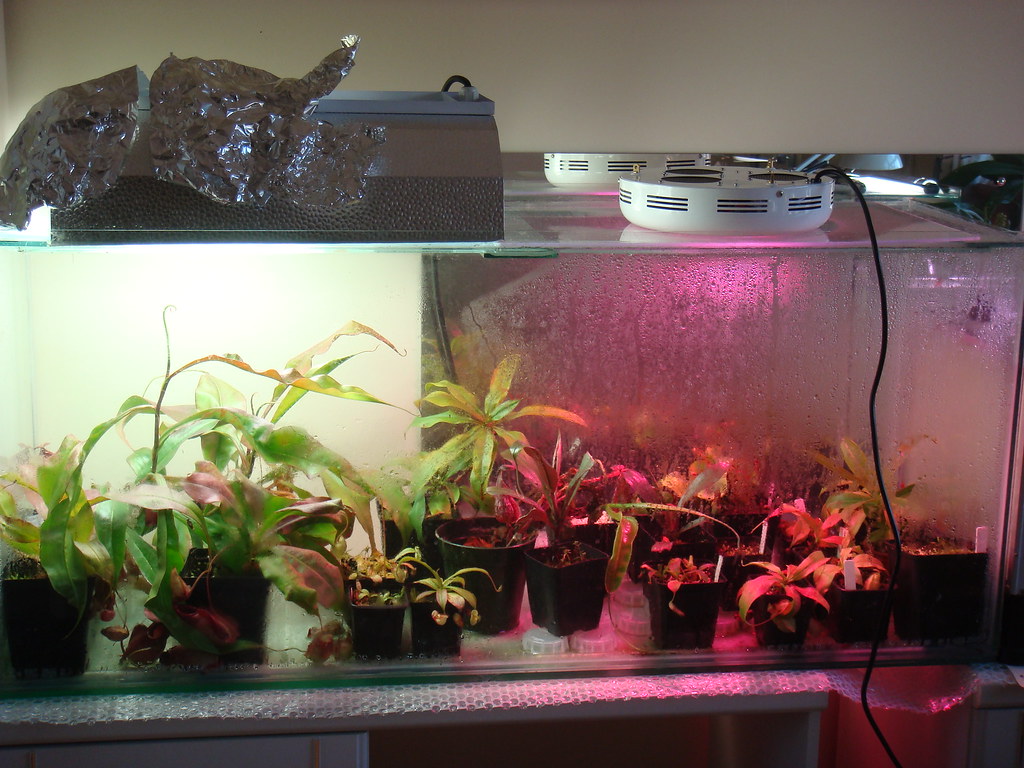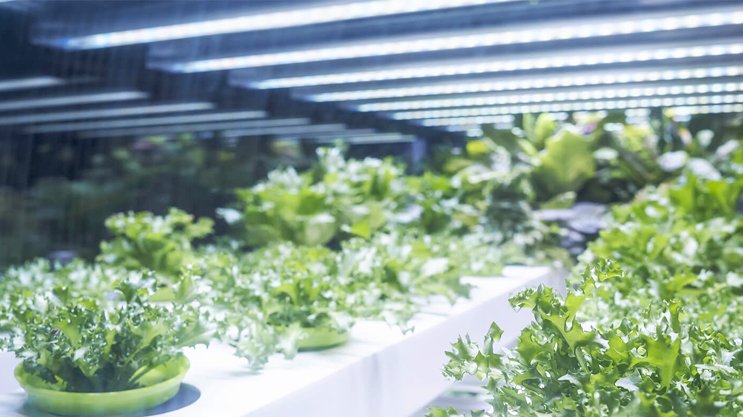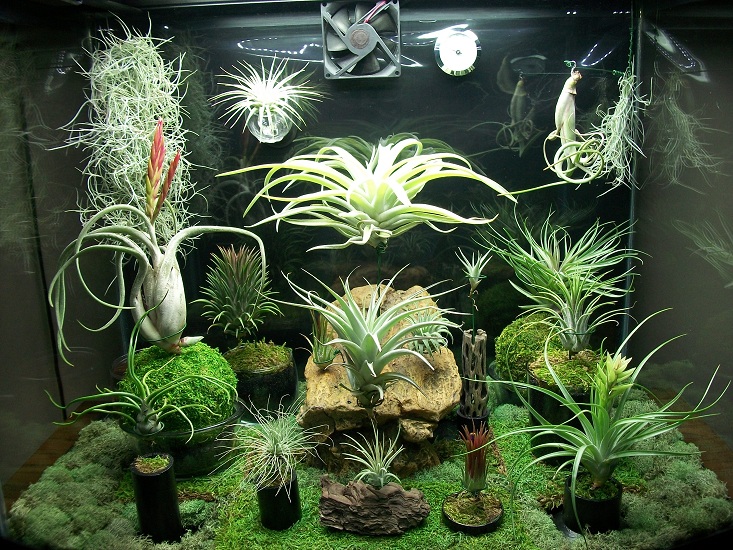LED lighting has become an increasingly popular way for people to grow plants. These are compact, efficient lights that are great for growing plants indoors without the need for natural light. There are many types of LED grow lights available on the market, but can they be used to effectively grow plants? Can you use these kinds of lights to grow plants? It depends...
How do LED light and plants growth correlate?
LED grow lights are often used for hydroponic growing, which means plants are grown in water without soil with the roots submerged. This is because they can deliver specific wavelengths of light that help promote growth.
Spectrum control becomes very important when using LED grow lights to grow plants indoors because certain types of light can affect how quickly or slowly a plant grows.
Although LED lights are good for promoting photosynthesis, they do not deliver the same wavelength (PAR) of light that humans need to see. This means it's unlikely you will be able to grow anything with LED lighting other than plants.
Different kinds of light and how they affect plants
Blue light - When it comes to lighting, blue-based spectrums are considered high energy and will promote vegetative growth in most plants. These spectrums are great for promoting leafy growth, but not so good with fruiting or flowering.
Red light - Red-based spectrums tend to produce more flowers instead of leaves on plants. These wavelengths are better for flowering or fruiting stages in plant growth, but will not promote vegetative growth as blue light does.
Green and yellow - Green and yellow-based spectrums fall somewhere between red and blue, which makes them the perfect kind of wavelength to grow most types of plants. These can help promote both leafy and fruiting/flowering growth which means they're the ideal choice if you want to use LED lighting for growing plants indoors.
What conditions do you need to grow plants at home?
Growing plants indoors with LED lighting is very difficult as they do not produce the same PAR as natural sunlight. Keep in mind that even though you won't be able to grow anything other than plants, these lights must still meet certain requirements for suitable growing conditions.
- Temperature: This should be around 21 degrees Celsius or 70 degrees Fahrenheit.
- Humidity: Ranges from 40% to 60%.
- pH level: 5.8 – 7.0 is ideal for most plants.
- Lighting needs to be supplemented with natural sunlight for healthy growing conditions.
With these criteria met and a good spectrum of light available, it should be possible to grow most types of plants using LED lighting indoors without much difficulty at all! In this regard, yes you can use LED strips to grow plants - but think about what you are giving up.

What plants can you grow at home?
You can grow any plant using LED lighting indoors. This is because they provide the right wavelengths of light needed to promote vegetative and/or flowering growth. However, there's a catch: natural sunlight contains many different spectrums and helps promote healthy growth which means some plants just won't grow as expected indoors.
- Flowers
- Fruiting vegetables such as tomatoes, peppers, and cucumbers
- Leafy vegetables such as lettuce or spinach
Plants that don't need much sunlight will also do well with LED lightings such as mushrooms or other fungi (which prefer blue light). If your goal is to use these types of lights for growing plants indoors, however, you should be aware of what it takes to make them work.
How do you know what kind of indoor grow lights should I get?
When shopping for LED panels for growing plants indoors, look at their PAR value when deciding what type to purchase. You may need a few different kinds of lights which is ok because this is a common practice in indoor growing. However, try to stay away from lights that have a low par value and instead opt for something closer to the 600 range.
Keep in mind when using LED grow lights indoors:
- LED panels tend to produce light in only one direction instead of several like HID lighting does. This means you'll need more than one panel if you want your plants to receive equal amounts of light at all points on the plant at once.
- If you're just starting out with LED lighting, it's best not to get too carried away by buying every new gadget under the sun because this can quickly become an expensive hobby. It might be better to start with cheap equipment before spending money on something better later down the line if needed.
- Even though LED lighting is energy efficient, you will still need to have a large power source for powering your lights. It's ideal that you get something that has built-in cooling systems and power conversion features if possible because it can help the safety of your plants and devices alike.
- LED panels can last up to 50,000 hours without needing replacement which means they're not only cost-effective but also durable. You may never even need to purchase another panel again after purchasing it the first time!
Depending on what type of indoor grow light you want to use and what kind of growing method you prefer (indoors or outdoors) will definitely affect whether or not you should be using LED lighting for growing plants indoors. If they are used in the right way and with the correct equipment, then they can be a great help when growing indoors.
Do LED light strips have enough light for photosynthesis?
Yes, LED light strips can be used to grow plants and it is possible to use the lights to photosynthesize. However, since LED lighting doesn't produce as much light as other types of lights such as HID or fluorescent, they may not be the right choice for some people looking to grow indoors.
If you're someone who wants a lot of control over what type of light your plants receive (e.g. if you want redder or bluer wavelengths), then using LED growing lamps might not work for you because they don't let you choose different colors so easily.
However, if all you care about is having something that's energy-efficient and will help your plants grow faster than usual, then LED lighting should definitely do the job for you.
By now you should have a basic understanding of whether or not LED strips can be used for growing plants indoors and what types of indoor grow lights exist so that you know what to look out for when shopping around.
What color spectrum do plants require for decent growth?
Many LED panels are able to emit various colors of light which can help your plants grow in different ways. However, you should primarily focus on getting something that emits red and blue wavelengths because these are the most useful for photosynthesis. Plants primarily use two types of photoreceptors to capture energy from the sun: chlorophyll a & b.
Chlorophyll a is better at absorbing red light while chlorophyll b is better at absorbing blue light so when shopping around for indoor grow lights it's best to look for ones that produce much more red than blue wavelengths. This will maximize how much photosynthesis your plants can do because they'll be receiving the right type of wavelengths essential for photosynthesis!

Can LED lights be used to grow food indoors?
Yes, it is possible to use LED lights to grow food indoors as well! However, there are many other factors involved such as what foods need certain wavelengths for and how much space there is indoors as well as outdoors so it's not as simple as yes or no.
For example, using LED lights to grow plants indoors isn't so much of a question because many people do this and the answer is simply yes. But for food, it can be difficult if you don't know what type of space you have available and what kind of foods need certain wavelengths to photosynthesize!
What fruits and vegetables can you grow at home with LED strips?
Basically, anything you want to grow indoors can be done so with LED lights as long as you know what type of light it needs for optimum growth. However, growing certain food plants might not be so straightforward because you need to take other factors into consideration such as how much space is available!
Some specific foods that are easier to grow than others with indoor LED lighting include berries (all kinds), tomatoes, peppers, and leafy greens like lettuce and spinach. As mentioned before, these types of foods do well because they don't require a lot of space or special wavelengths. If your goal is to produce nutritious food for yourself or your family then using LED panels should definitely work if you consider the above!
Will you have enough light?
The biggest problem with growing plants indoors with LED lighting is that they are not as bright as the sun. Compared to natural sunlight, these lights will probably not be bright enough to promote healthy growth in most plants.
There are exceptions, however! Most types of succulents and cacti do well with artificial lighting because they don't require much light to survive (which is why they make great houseplants). You can also use LED grow lights for growing mushrooms at home which prefer low intensities of blue light (450 - 470 nm) for fruiting.
What is the most efficient source of light when growing plants?
For growing plants, the most efficient type of light is full-spectrum sunlight. Even though LED grow lights are energy efficient for growing indoor plants, they cannot match the amount of power that natural sunlight provides.
If you're really serious about generating as much yield as possible with your indoor garden then it would be best to use a mix of HID or fluorescent lighting which can produce levels of light close to what people are used to seeing outdoors!
When looking at LED strip lights, what should you consider?

Some important factors to consider when looking for LED grow lights include: how much space is available, the size of your plants, and what type of food you want to grow. You also need to consider whether or not you need a lot of control over the color spectrum that your plants receive because if not then LED lighting might be fine.
While choosing a good LED strip you need to consider:
- What type of light is being put off
- The distance between the LED lighting and the plants you want to grow
- How much power is needed by the LED lights for optimal growth
- What size plants you are growing
- What type of plants you are using the lighting for
Conclusion
It is possible to use LED lights to grow food indoors as well! The answer is simply yes. However, there are other factors such as how much space you have and what kind of foods need certain wavelengths for photosynthesis.
It's important to note that LED strips are not as powerful or bright compared to sunlight so if your goal is the most efficient method then natural sunlight would be best. Using a mixture of HID/fluorescent lighting can provide levels of light close to what people are used to seeing outdoors which will maximize the amount of plant yield you get indoors!
The most efficient way to grow plants with light is full-spectrum sunlight because it provides the most power for growing indoor plants however LED grow lights are more energy-efficient. It all comes down to what your specific goals and needs are when deciding which lighting you should use.